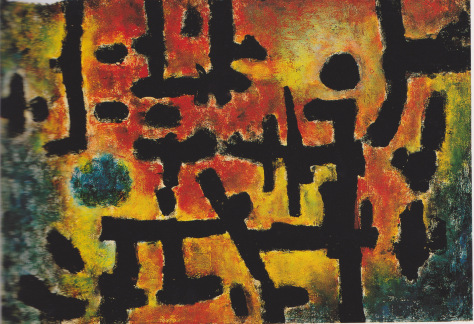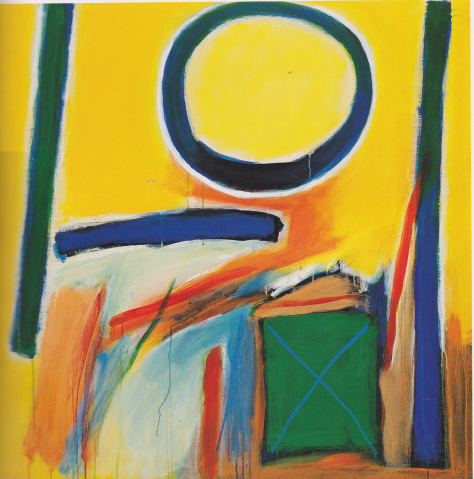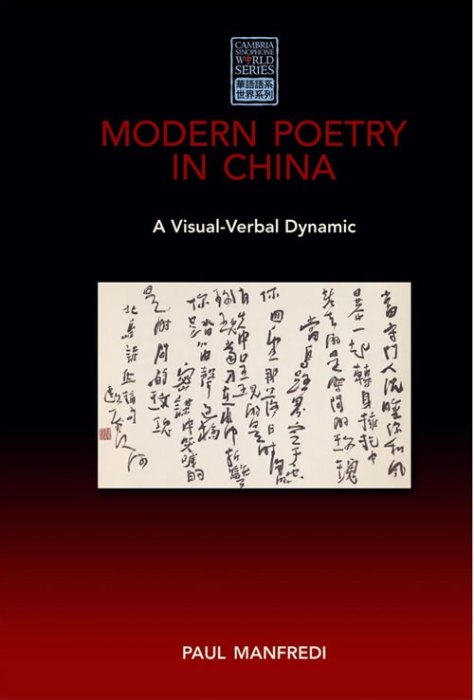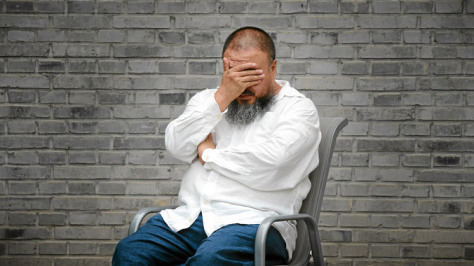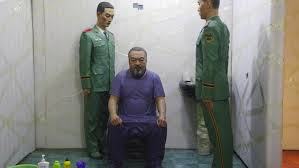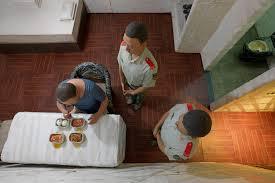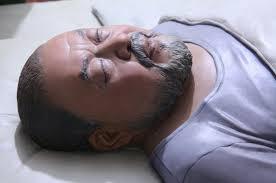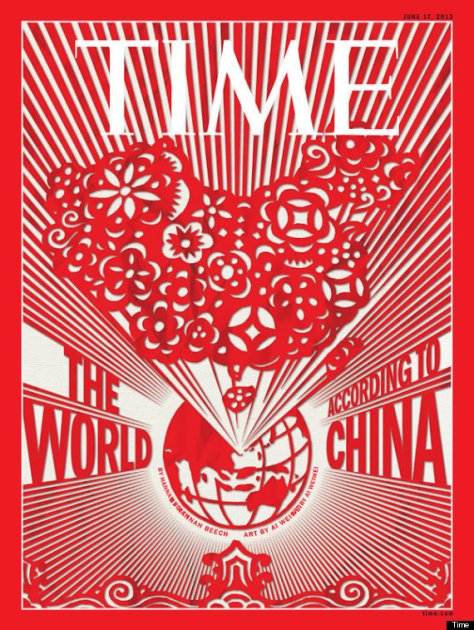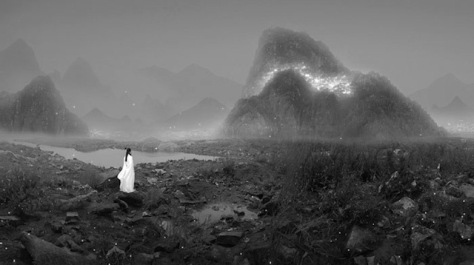Below is an exchange of views posted to Modern Chinese Literature and Culture, a listserv managed by Kirk Denton at Ohio State University. The subject was Noble and Ignoble : Ai Weiwei: Wonderful dissident, terrible artist by Jed Perl. The original article is here
My own opinion below, and following the other posts to the list:
What has long intrigued me about Ai as provocateur, which I think is the best way to see his work either as artist or as dissident, is that he seems genuinely fearless. The clear examples are his constant challenges to Beijing (among other) authorities, whether they derive from be art-related, politically-motivated, or, more commonly, perfectly blended activities. The less obvious examples, though, are often more interesting, as with the 2010 interview with CNN (http://www.youtube.com/watch?v=xyAeLmN_UjA) wherein Ai proclaims (in English) that China has no philosophy, and no humanity. On that occasion I found myself wondering if he might not actually be mocking his interviewer. After all, he can’t really mean that, right?
Regardless, I was pleased with Perl’s review, mostly because I’d yet to see a single critical word about Ai in English-language press, and this fit that bill and then some. Strangely, this also provokes a somewhat defensive response from those of us in the field, myself included, who are quick to point out that Ai’s artistic work in China remains clearly more relevant than derivative. Obviously, the very idea that his work is derivative begins in an historically informed and global context, where his status (“influence”) as artist withers in the face of his heroic, even cinematic stand against the faceless regime. And of course, as Lucas observes, to get into the particulars of the dissent is more than most readers of the New York Times, Guardian, or CNN, are willing to do. But the media game is where, again, I think Ai has been concentrating his efforts since at least 2008, when the Olympics gave him direct access to a global platform. Indeed, this inclination to celebrity goes back to the days in New York, when he and many who now populate the contemporary Chinese cultural elite (image of Feng Xiaogang sitting on top of a taxi cab comes to mind) were dreaming up their somewhat impossible futures.
So my issue with Perl’s review perhaps comes down to the phrase “pleads his case in art museums.” I wonder, in fact, if that’s actually Ai pleading, or is it instead some battery of curators and art directors, who are perhaps better targets for Perl’s critique than a contemporary Chinese artist making his way, albeit willingly, in a veritable mine field of political and aesthetic explosives day after day. What Ai actually cares about is not Perl (or us), but the people who surround him, and this is perhaps the best thing that can be said about him.
The first response came from Lucas Klein.
MCLC LIST
From: Lucas Klein <[email protected]>
Subject: Ai Weiwei: wonderful dissent, terrible artist (1)
*****************************************************************
Jed Perl writes: “once upon a time Tatlin, Malevich, and El Lissitzky
imagined that they might unite radical art and radical politics.” In the
circles of American poetry I travel in, The New Republic is known to match
liberal politics with conservative aesthetics (in the same circles, those
liberal politics are often themselves seen as pretty conservative). I
haven’t paid much attention to its art criticism, but this piece by Jed
Perl (who himself is known as rather stodgy in his tastes) demonstrates
that the same may be true in visual art, too.
Here’s an example of Perl’s art historical conservatism: “If the scale of
a work and the way the work is produced are irrelevant to its meaning or
its content, then what on earth is a work of art? Isn’t a work of art by
its very nature a matter of particulars, of size and scale, of who does
what and how?” This seems like a question he might have wanted to ask Sol
Lewitt or other conceptual artists forty or fifty years ago. There’s
always the question, Would Ai Weiwei be so famous if not for his stance
against the Chinese Communist Party? But the flip-side of that is, Would
Ai Weiwei’s identity as an artist be criticized, undermined, or
second-guessed if he weren’t Chinese?
I’m not suggesting that political virtue and artistic value are the same
(I’ve posted reviews to this list specifically stating that they’re not).
But here’s how it works: Art Review magazine listed him as the most
influential person in the art world in 2011
(http://blogs.wsj.com/chinarealtime/2011/10/13/ai-weiwei-on-top-of-the-art-
world/). Maybe you think he’s influential for his politics rather than for
his art, but then again, I can think of no other Chinese person who has
ever been considered most influential in the world in his or her métier
while alive; Mo Yan, Gao Xingjian, Bei Dao, Lu Xun, and Li Bai have never
been considered the most influential writers in the world, and hey,
Chairman Mao wasn’t even the most influential Communist in the world! For
some, what’s influential about Ai Weiwei’s art is that he does not want to
define his artwork only by what can be easily put on display, but rather
that his life (also on display for more reasons than one) is his artwork.
This doesn’t mean everything he does is good. I certainly don’t respond to
all his work (the appeals to the government from many mothers following
the Wenchuan earthquake, framed and hung on the wall at the Hong Kong
International Art Fair, where I saw it last May, did not move me
aesthetically, and I found his Gangnam video stupid and indulgent), but my
own take is, actually, that Ai Weiwei is a much more interesting artist
than he is a dissident. I haven’t read all his tweets or collected
writings, or even seen Never Sorry (so this is limited; please write in if
you think my judgment is hasty), but my sense is that as a political
thinker he’s a one-trick pony, saying no more or less than the Party is
bad. I have seen no systematic analysis or developed perspective, but
rather sometimes who will attack from left or right depending on what he
thinks the problem is. That’s fine, but I don’t think it makes a
compelling dissident (Liu Xiaobo, on the other hand, whom I certainly
don’t agree with all the time, has a consistent Liberal standpoint; a more
developed perspective gives him more range as a dissident). In Ai Weiwei’s
artworks, however, I see him engaging much more fully with the depth and
breadth of the Chinese cultural and political identity, and what that
means for, as John Berger put it (quoted in Perl’s piece), the “style he
inherits, the conventions he must obey, [and] his prescribed or freely
chosen subject matter.” I don’t think he can articulate his aesthetics
very well (many artists cannot), but even in the poorly lit, undersized
images of his sculptures on the New Republic webpage (as if consciously
laid out to appear diminutive), I see craft and concept combined in ways I
find not only interesting and intriguing, but beautiful.
Lucas
Following are numerous others writing to the list.
MCLC LIST
From: Stanley Seiden <[email protected]>
Subject: Ai Weiwei: wonderful dissident, terrible artist (2)
*******************************************************************
I think I disagree with both Messrs Perl and Klein. Or to speak more
positively, I agree with Perl’s assessment of Ai’s dissidence and Klein’s
with his art.
With little artistic background, I feel far less qualified to comment on
Mr. Ai’s artistic work, but as an enjoyer of art I’ve never found Ai’s
work to strike any fewer aesthetic chords in me than the oeuvre others.
The history of artwork as revisualizations of every day objects is far
older than Ai (see Duchamp’s urinal and Creed’s balls of paper). What’s
more, the mere fact of one viewer’s indifference to a piece of artwork
(such as Perl’s bafflement at Cube Light) does not diminish its impact to
others. Ai’s animal heads may be devoid of deeper meaning than a
presentation of Chinese cultural icons, but I question Perl’s seeming
renunciation of, say, the entire Pop Art movement, which was built on
nothing but stark portrayal of cultural icons. It is hard to have
patience for a critic who would allow a conversation of art without Mickey
Mouse (or 生肖鼠, I suppose).
As for the dissidence of Ai, I highly recommend watching Never Sorry for
its detailed portrayal of the shape and form of Ai’s work to criticize the
government. I say “work” because it is a laborious project. Ai doesn’t
just post the picture of his brainscan on museum walls (which both Perl
and Klein object to on different merits); he makes numerous trips to
Chengdu, files all his paperwork, and documents the entire process. The
message I took from Never Sorry, or at least from what it depicted of Ai’s
process, was that it’s never enough to simply denounce the Party as “bad.”
Ai has taken it upon himself to play out the system, follow the threads
to their end, and hold everyone (including himself) accountable for their
actions.
I think separating Ai’s artwork from his dissidence (and I don’t really
like splitting his public image into those two boxes in the first place;
there is more to Ai’s promotion of good governance in China than simply
opposition to government policy) is also somewhat self-defeating. His art
is a form of dissidence; his dissidence emerges as art. Ai Weiwei is a
man who deeply loves his country and seeks to improve the government
therein, and much of his artwork is documentation of this passion and
pursuit. Pollack threw paint against a canvas; Ai is throwing himself
against the similarly blank, expressionless expanse of the Chinese
government, in numerous shades and from numerous angles, and then leaves
us to see the marks that are left. I am a cynical art student, and I
agree with Perl that a list of names typed on paper, on its own, is
largely absent of artistic merit. But when I read that list, I am moved
by something much more potent than oils and charcoal. Ai is not going to
win a Nobel Peace Prize any time soon, but he has taught Americans (and
the world) far more about China than Liu Xiaobo or Tan Zuoren. That, too,
is a power of art: to rush in where dissidents aren’t allowed to tread.
Ai is an artist; these are his works. They have the power to stir us
emotionally, even if we don’t understand every installation. Why
shouldn’t we put them in our museums?
Stanley
============================================================
From: Kristin E Stapleton <[email protected]>
Subject: Ai Weiwei: wonderful dissident, terrible artist (3)
Dear all,
I agree with a lot of what Lucas Klein wrote in his response to the Perl
review of Ai Weiwei. Speaking without any credentials as an art critic (I
did forward the review to my colleagues in Visual Studies here in Buffalo
for their thoughts but have not heard back yet), but having seen the
Hirshhorn exhibition and the documentary, I think Ai Weiwei’s work is
trying to deal with Chinese history and the contemporary world in a
variety of interesting ways. Maybe it is the eclecticism that Perl
objects to? That light cube was not all that moving to me, either, but it
certainly immediately called to mind the total glitz attack of 1990s
Chinese commercial spaces. The map of China made out of wood reclaimed
from demolished historical buildings is pretty breathtaking, on the other
hand.
As for Ai as a “one-trick pony” political activist, I think it’s true that
in politics he is not as eclectic as in his art-making — the ability to
share ones thoughts on any subject with whomever one wants and have free
access to public information that should legally be available are what he
asks for in almost all of his “performance art.” That’s not a bad one
note for a one-trick pony to hold to, it seems to me, at this point in
history. (His broader approach to the question of the “legacy of Chinese
culture,” explored by destroying ancient artifacts, etc., is also
political, but in a broader context of cultural politics). The Gangnam
thing may be silly, but being silly is not a particular heinous offense
(at least, I certainly hope not!) and perhaps it only became publicly
known because he has decided that it’s better to just make his whole life
public than restrict it to his immediate circle and the public security
forces.
By the way, Buffalo’s Albright-Knox Gallery bought a couple of pieces from
the “Moon Chest” installation, which will come here after the exhibition
finishes its tour.
Best wishes,
Kristin
=========================================================
From: Sean Macdonald <[email protected]>
Subject: Ai Weiwei: wonderful dissident, terrible artist (4)
I read a review like Perl’s with a large grain of salt.
Different forms of contemporary art have trajectories within their
respective historical contexts. Any work or production that merits serious
consideration deserves to be criticized in the context of other works and
their institutions. Although Perl doesn’t seem to be a very nuanced art
critic, I find his comments to the originality, or lack of originality in
Ai’s work, interesting.
Perl seems to want to simply criticize Ai’s production as derivative
because Perl is anchoring Ai’s aesthetic in Western neo or contemporary
avant-garde work, work that does play with ideas of originality and mass
production. Perl has a point here. But Ai also grounds the content of his
work in contemporary PRC politics and society. Perl also seems to
understand that Ai is not the first contemporary artist to articulate
explicit political messages. Perl just doesn’t like Ai’s “messaging.”
The idea of bringing John Berger into a discussion about a contemporary
artist like Ai is also interesting, but maybe this is where Perl doesn’t
get it. For example, extrapolating from Berger, Perl claims Ai’s work
lacks “sense of the means as constituting an opportunity and a restraint.”
And what if the artist’s “lack of restraint” is precisely the point? What
if this “lack of restraint” is a kind of reply to a context (political,
social, and institutional) that still (from the point of view of the
artist) exerts too much restraint?
In the end, it is possible that neither Perl nor Ai are “conservative” or
“liberal.”
All the best,
Sean
0.000000
0.000000
